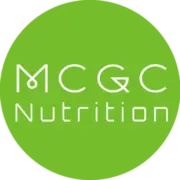No, the apparently convenient ‘nutrition in a box’ does not rival the completeness of a healthy plate. All too quickly, one may forget, by the temptation of the latest and most popular supplement, that food delivers a synergistic effect from the combination of the beneficial nutrients they contain. In this purchase, what is also forgotten is the importance of learning how to implement successfully healthy dietary habits and to understand what purchases to make at a grocery store. Hence, supplements are not a substitute for a healthy diet but rather an aid when necessary. However, some vitamins may be insufficient if coming from diet alone. This is the case for vitamin D and, for women of childbearing age, the addition of folic acid and iron.
Vitamin D
The main source of vitamin D, which truly is a hormone, is sunlight absorption by the skin. In Canada, sunlight is insufficient to produce adequate vitamin D levels and, therefore, the need for a supplement is warranted. Other reasons such as having darker skin and the use of sunscreen protection against premature aging and skin cancers, which are extremely important and necessary, but that limit sun exposure and vitamin D production by the skin. The amount required depends mainly on age and gender but a good general rule is 600 – 800 IU as a complement to natural dietary sources. Yes, vitamin D can be found naturally in foods such as dairy products (fortified with vitamin D) and fatty fish which should be included as part of a healthy diet. These sources are, however, not sufficient to meet nutrient requirements and for this reason, a combination of food sources and supplementation, in my opinion, is best. The most absorbable form is vitamin D3 (animal source) but if you are a vegetarian, you can take vitamin D2 which comes from UV irradiated yeast.
Iron & Folic Acid
For women of childbearing age, these vitamins are important to partly compensate for iron losses from the menses which are difficult to receive solely from food sources. In practice, I see my young to middle-aged female patients consuming approximately 2/3 of the iron requirements, though they follow healthy meal pattern. Also, iron is important for women who desire to fall pregnant, as is folic acid. It is important to note that it is the synthetic form of folic acid (pharmaceutical form) which is important to greatly reduce the risk of a neural tube defect (NTD’s) to the fetus. Fortunately, supplementation of folic acid can also aid in preventing severely tragic and deleterious consequences (such as spina bifida) on the fetus due to low folate stores (pre-pregnancy) and low intake during pregnancy (most critical in the 1st trimester). It is also important to note that it takes 3 to 4 month of sufficient supplementation ( at least 400 mcg) of folic acid before falling pregnant to have enough to prevent an NTDs during pregnancy. Most general multivitamins will contain an adequate dose of iron and folic acid to complement a healthy diet and this can be reviewed by your dietitian or healthcare professional. This supplementation must continue throughout pregnancy. As soon as pregnancy occurs, the recommendation increases to 600 mcg of folic acid and most pregnancy vitamins will carry 1000 mcg which is sufficient to protect against NTDs unless specified otherwise by your healthcare provider, for a particular health reason and should also include iron and vitamin B12. For more information on folic acid and NTDs you can visit the following website by Health Canada:
It is important to note that supplements and natural products can be dangerous.
The recommendation and obtention of natural products and/or supplements cannot and should not be a method to circumvent safe medical practices. Furthermore, their inherent potential for harm should be minimised. Always speak with a healthcare provider before undergoing any supplement regimen, since some may interact with other supplements (including natural products) and/or medications that you are currently taking. When changes are made to your medication and supplementation regimen, ask your pharmacist, medical doctor and/or registered dietitian to verify and review the interactions between those supplements and other medications or supplements you are currently taking. Medication and supplements can also interact with food such as alcohol, caffeine, licorice, garlic, and grapefruit, just to name a few. A dietitian will regularly verify the interaction of medications and/or supplements with food and nutrients. Do not hesitate to ask any of the above-mentioned health professionals for the revision of the interactions with your supplements, since they can have an important effect on your health. For more guidance on your specific requirements for supplementation, I recommend speaking to a qualified health provider who has access to your medical history and/or records such those mentioned above.
As a dietitian, my role is to guide those under my care to make informed decisions: this means to give both positive and negative scientific evidence in an atmosphere of neutrality. In the end, my responsibility is to protect my patients with the best of my knowledge and to promote their wellbeing. And with this, I hope I have demystified which supplements are warranted to take and the importance of a healthy plate as your best ‘go to’ sources of nutrition. form
*The information provided this website (www.mcgcnutrition.ca) is for general informational purposes only and does not substitute advice from your personal health professionals. Articles provided on this website (www.mcgcnutrition.ca) are only the sole opinion of the author and do not represent the company and do not replace medical advice from your own medical professional. Before taking any action, we encourage consultation with your doctor or your healthcare professionals. The use of any information on this site is solely at your own risk.
References:
1- Dietary Reference Intakes for Calcium and Vitamin D. Institute of Medicine. 2011. Washington, DC: The National Academies Press. https://doi.org/10.17226/13050.
2- Dietary Reference Intakes, Health Canada,https://www.canada.ca/en/health-canada/services/food-nutrition/healthy-eating/dietary-reference-intakes/tables.html(page viewed November 7th, 2017)
